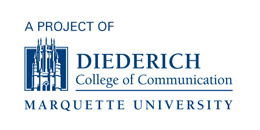
The Social Development Commission works in tandem with the Lead Safe Homes program. This is one of the properties served by the program. (Photo provided by Social Development Commission)
Ofelia Mondragon’s “wake-up call” to the dangers of lead poisoning came in 2014, when her daughter had high lead levels at age 2.
After struggling to get the care her daughter needed, she recognized the importance of helping others and their families stay safe.
“I went through that personally, so I have a special touch,” said Mondragon, residential services project manager at the Social Development Commission.
Now, Mondragon works as a key contributor to the Lead Safe Homes Program, a program from the Wisconsin Department of Health Services that removes lead paint, dust and soil in residents’ home.
According to the Environmental Protection Agency, homes built before 1978 are at greater risk of lead paint, soil and dust exposure. This can occur when lead paint previously used on the homes begins to chip or flake. That exposure can cause lead poisoning.
The Lead Safe Homes Program is available to families with children and pregnant women who are eligible for BadgerCare or Medicaid. Homes in the program must be built before 1978.
The program removes lead paint, dust and soil but does not handle lead service line replacement. It does provide point-of-use water filters when applicable.
Brian Weaver, lead policy adviser with the Wisconsin Department of Health Services, said the program has been around since fall 2019.
“The demand is great in Wisconsin,” Weaver said. “We’ll need a multi-pronged approach, honestly, to be able to address all the potential lead hazards and older properties.”
He said there’s an estimated 350,000 homes with potential lead-based paint hazards.
Weaver said the goal is to renovate 150 properties per year in Milwaukee.
The goal for the state is 400 properties per year, Weaver said. The program has funds to invest $35,000 per property.
The program has two Milwaukee-based partners: the Social Development Commission and Milwaukee Habitat for Humanity.
Mondragon said her team served 74 homes since the beginning of the year. The ultimate goal for 2021 is 100 homes served, and by the end of June 2022, another 100 added to that.
Eric Neeb, critical home repair manager with Habitat for Humanity Milwaukee, said the program plans to target the Midtown and Harambee neighborhoods, two areas where much of the housing stock is older than 1978.
While the program lends support statewide, Weaver said it will operate heavily in Milwaukee.
“We know that there’s a need everywhere in the state,” Weaver said. “We’re making sure that we are prioritizing that and those high-need populations where we see the greatest need.”
How to participate
Property owners can apply for the program, and tenants are encouraged to ask their landlords to participate.






Leave a Reply